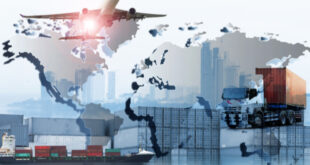A 15 percent drop in imports at the Port of Los Angeles could be looming, and that would hurt the loyal logistics industry, if it happens.
The Trump Administration’s trade war with China heated up last week when it proposed placing a 10 percent tariff on $200 billion worth of exports from that country.
Those goods would include television sets, leather handbags and groceries, according to the list released July 10 by the Office of the U.S. Trade Representative, the agency responsible for implementing tariffs.
That announcement came five weeks after the administration announced it was slapping a 25 percent tariff on $50 billion worth of Chinese goods shipped into the United States.
Administration officials, who had said they were trying to resist a trade war with one of the country’s major trade partners, also announced it would place stricter limits on Chinese investment in U.S high-tech companies.
Beijing immediately vowed to retaliate. It also said it would increase the number of goods and services it purchases from the United States in order to cut the trade imbalance between the two countries, one of the administration’s major demands.
Because the first list of products was mostly capital goods – items used to produce other goods, instead of items purchased by consumers – that move wasn’t expected to drive up retail prices.
However, last week’s list is almost equally split between capital and consumer goods, which means that U.S consumers are likely to see higher prices, although exactly when that might happen is impossible to predict.
This could be the start of a full-blown trade war between two of the world’s most powerful economies, which could hurt both sides.
Should that happen, the Inland Empire, with its heavy dependence on the logistics industry, might be more vulnerable than most other U.S.markets. Not only would prices go up but logistics jobs, a major part of the region’s economy, would go away.
About 15 percent of the goods that come through the Port of Los Angeles ends up in warehouses in Riverside or San Bernardino counties, said Phillip Sanfield, spokesman for the authority.
Two hundred billion in tariffs would impact about 15 percent of the goods that comes through the Los Angeles port, according to Sanfield.
“With the $200 billion proposal, it’s possible they might back away from that and negotiate a different deal,” Sanfield said. “But whatever happens, the Inland Empire could get hurt because it has so many warehouse-distribution centers.”
The Port of Los Angeles is the largest container port in the United States. It covers 43 miles, connects to the Port of Long Beach and is the primary feeder of imported goods to the western United States.
An estimated $284 billion worth of material passed through the Port of Los Angeles last year. More than half of that – $145 billion – involved China: $134 billion in imports and $11 billion in exports, according to the port authority.
No one knows exactly how much of what is stored and distributed in the Inland region originated in China, but any reduction in imports from there would be noticed sooner or later.
The question is, how much?
One local economist believes the region is under no immediate threat now, although he admits that could change.
“So far, this is staying away from the stuff that is on the shelf at Walmart or sold by Amazon, which is what comes here from China,” said Jay Prag, professor of economics and finance at the Drucker School of Management at Claremont Graduate University. “They’re keeping the battle away from consumers as much as possible.
“If it gets out of hand it could be trouble, not just in the Inland Empire but everywhere. But I see very little chance of that happening.”
Because it’s the world’s largest economy, the United Stated is in a strong position in any trade dispute.
“We’re in a global economy, and if you’re in international trade there aren’t a lot of alternative markets,” Prag said. “You have to deal with us, which is why I view this situation positively, and I believe it will resolve itself.”
Prag, a Trump supporter who said he follows the trade issue closely, credited the administration will addressing the trade imbalance between the United States and China.
“They’re looking for a political win,” Prag said. “They want to be able to say they’ve remade the rules of trade with China, which is something that I believe needs to be done. It’s a legitimate goal because we have to take care of our intellectual property.”
A 15 percent drop in imports at the Port of Los Angeles could be devastating to the Inland Empire, but it’s not clear if that’s going to happen, said Robert Kleinhenz, economist and executive director of the UC Riverside School of Business Center for Economic Forecasting.
“Trade was up last year and it’s stayed up so far this year, so 2018 will probably be a good year,” Kleinhenz said. “Besides, not everything that comes into the Inland Empire is tied to China. A lot of it originates in this area.”
 IE Business Daily Business news for the Inland Empire.
IE Business Daily Business news for the Inland Empire.


